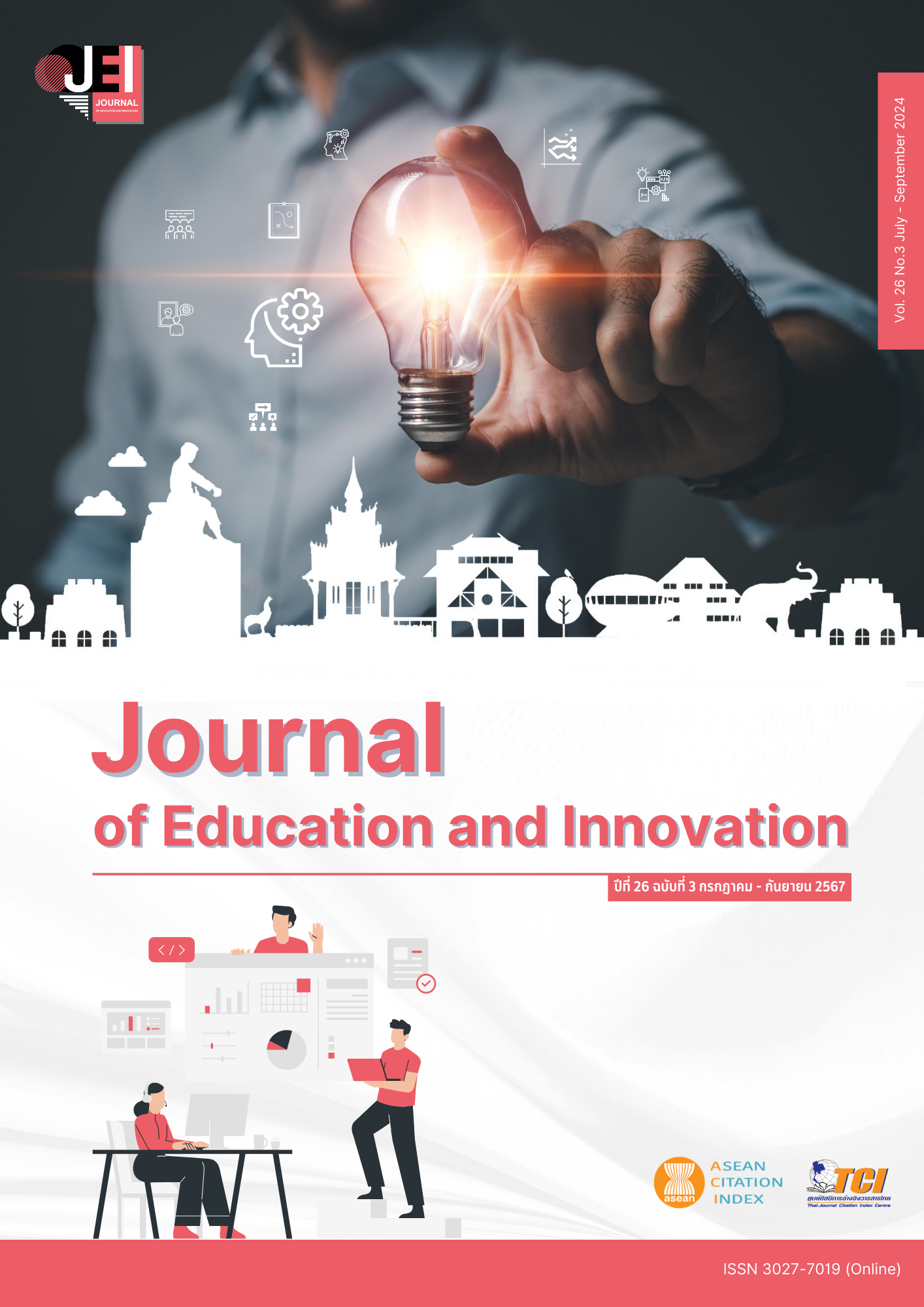DEVELOPMENT OF PROBLEM-SOLVING ABILITY AND LEARNING ACHIEVEMENT OF PRATHOMSUKSA 4 STUDENTS ON THE TOPIC OF SPACE TRAVEL BY USING STEM EDUCATION COMBINED WITH VISUAL THINKING
Main Article Content
Abstract
The purposes of this research were to 1) compare students’ problem-solving ability before and after intervention, and 2) compare students’ learning achievement before and after intervention. The sample, obtained through cluster random sampling, consisted of 37 students from Prathomsuksa 4/5 at Ban Pak Un (Pak Un Phadungwit) school under the Office Nakhon Phanom Primary Educational Service Area 2, in the second semester of the academic year 2022. The research instruments included 1) lesson plans based on STEM education combined with visual thinking, 2) a problem-solving ability test, and 3) a learning achievement test. The statistics used in research were percentage, mean, standard deviation, and t-test for dependent samples. The results were as follows: 1) the problem-solving ability of students after the intervention was higher than that of before at the .01 level of significance, and 2) the learning achievement of students after the intervention was higher than that of before at the .01 level of significance.
Article Details

This work is licensed under a Creative Commons Attribution-NonCommercial-NoDerivatives 4.0 International License.
The owner of the article does not copy or violate any of its copyright. If any copyright infringement occurs or prosecution, in any case, the Editorial Board is not involved in all the rights to the owner of the article to be performed.
References
insKru Thailand. (2018). Visual Thinking 101: introduction. Retrieved from
https://medium.com/inskru/inskru-visual-thinking-101-9aecc0630c30
Junsuthonpoj, S. (2020). Teaching environmental management using visual thinking to promote learning attitude and achievement of hospitality students. Walailak Journal of Learning Innovations, 6(2), 117-131.
Kharoendee, K., Khamhaengpol, A., & Pansuppawat, A. (2021). Development of problem-solving abilities of prathomsuksa 5 students on the topic of change of substance by using STEM education. Journal of MCU Peace Studies, 10(1), 160-174.
Khotsing, S., Erawan, P., & Siwarom, M. (2014). Development of a science instruction model based on problem-based learning to enhance problem solving skills of grade seven students. Research Methodology & Cognitive Science, 11(2), 40-52.
Ministry of Education. (2008). Basic education core curriculum A.D. 2008. Bangkok: The agricultural Co-operative Federation of Thailand.
Netwong, T. (2016). Development of problem solving skills by integration learning following STEM education. Research Journal-Rajamangala University of Technology Thanyaburi, 15(2), 1-6.
Phonchaiya, S. (2014). STEM education with advanced thinking. IPST Magazine, 42(189), 7-10.
Sholihah, U., & Maryono, M. (2020). Students’ visual thinking ability in solving the integral problem. Journal of Research and Advances in Mathematics Education, 5(2), 175–186.
Siripattrachai, P. (2013). STEM education and 21st century skills development. Executive Journal, 33(2), 49-56.
Yafad, S., Visavateeranon, S., & Pinsuwan, D. (2019). The effects of learning management using STEM education the topic of substances in everyday life on problem solving ability and creative thinking of prathomsuksavi students. Kasetsart Educational Review, 34(1), 39-50.


